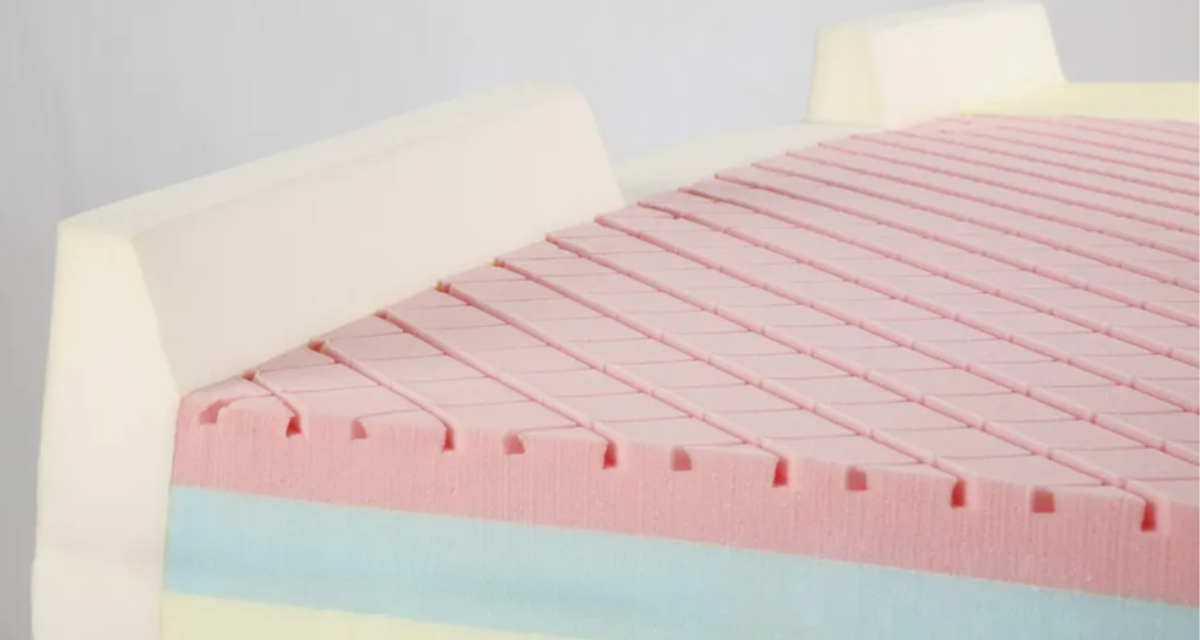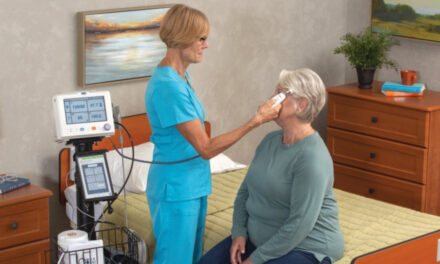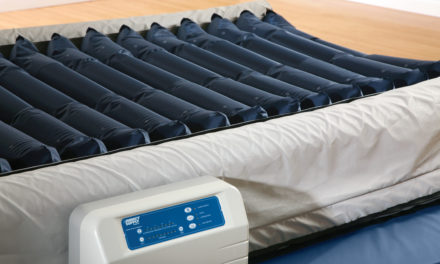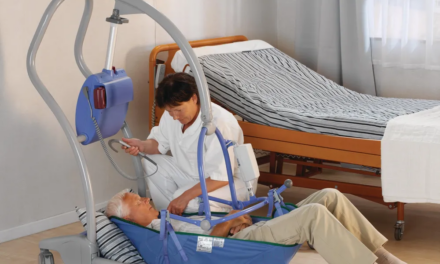Finding the right mattress can significantly impact one’s quality of life, and this is especially true for seniors. Foam mattresses have become a popular choice for senior living, offering a perfect blend of comfort, support, and durability. With advancements in mattress technology, foam mattresses now cater specifically to the unique needs of seniors, addressing common issues such as joint pain, pressure points, and mobility challenges.
Why Foam Mattresses?
Comfort & Therapeutic Support
- Foam mattresses conform seamlessly around the body distributing the patient’s weight across the mattress rather than at pressure points
- High-density foam, along with a soft, breathable, stretch cover helps create a balanced combination of comfort and support while also providing temperature neutrality and resistance to microorganisms
- Various levels of firmness and densities are available for optimal comfort
Wound Prevention
- By evenly distributing weight and supporting proper posture and prominence positioning, medical foam mattresses can help prevent pressure injuries and other skin integrity issues.
- They provide varying levels of static pressure redistribution for prevention and treatment
- Often include enhanced scapular, sacral and heel sections to further reduce pressure in these vulnerable areas
Convenience
- From standard, to wide, to bariatric, foam mattresses come in a variety of sizes to meet various customer needs
- Flexible design is ideal for adjustable beds
Types of Foam Mattresses
Standard Polyurethane
- The most popular type of foam used
- Provides a high level of comfort and support
- Can be constructed of varying density and softness levels
- Suits a diverse resident population
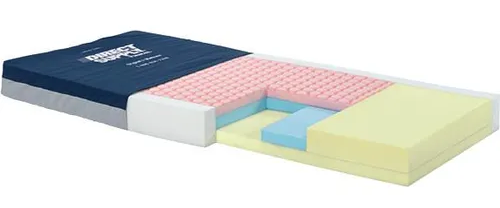
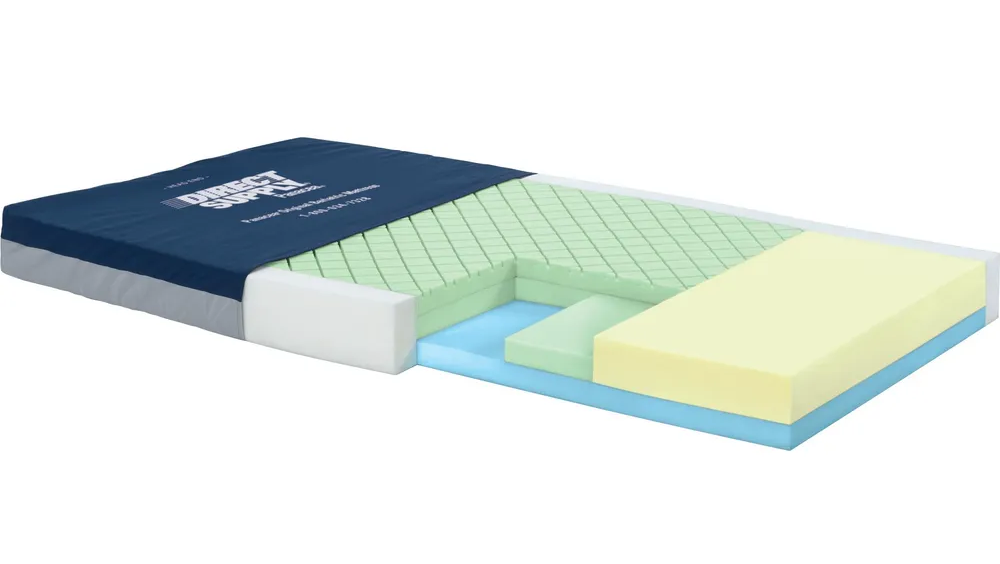
Viscoelastic
- Also known as memory foam
- Conforms to the body’s natural shape, offering excellent pressure relief
- Ideal for ambulatory and rehabilitation residents
- Viscoelastic foam excels in pressure distribution
- Viscoelastic foam with gel improves heat dissipation for greater comfort and a cooler sleep surface
Key Considerations for Foam Mattresses
Safety
- Adherence to all relevant fire and safety standards
- High-quality materials and construction designed to withstand the demanding use of healthcare settings
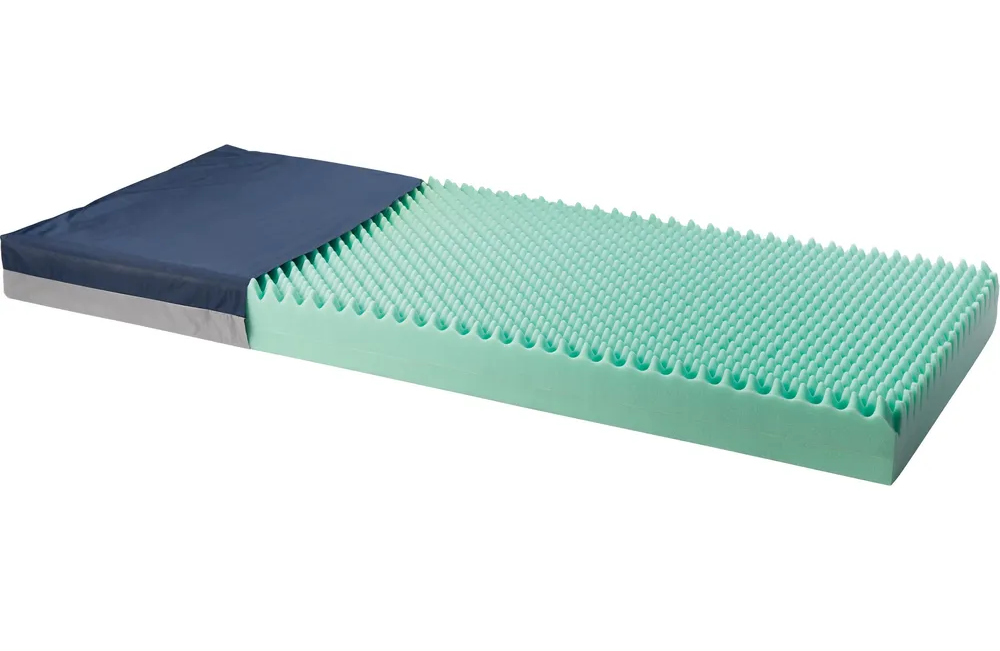
Materials & Construction
- Fluid- and stain-resistance
- Suitable for frequent sanitization processes including steam cleaning and UV light treatment
- Ability to withstand hospital-grade disinfectants
- Hypoallergenic features (i.e. resistance to dust mites, mold and mildew)
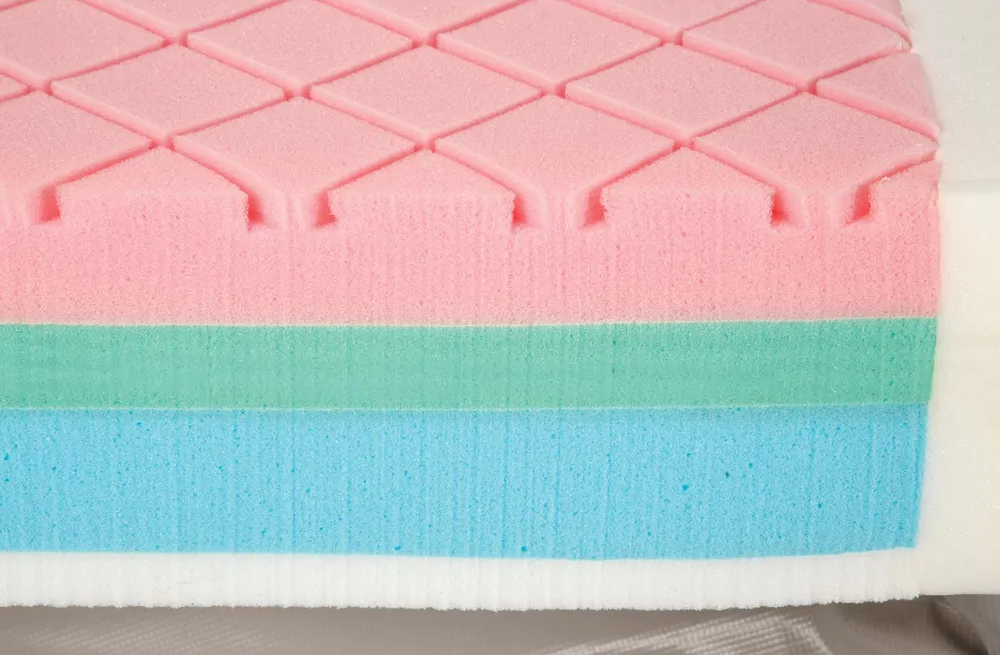
Weight Capacity
- Hospital foam mattresses are available in weight capacities typically ranging from 250 to 1000 pounds
QUICK TIP Foam mattresses that don’t support a resident’s body weight won’t provide optimum redistribution and can put the resident at risk of bottoming out.
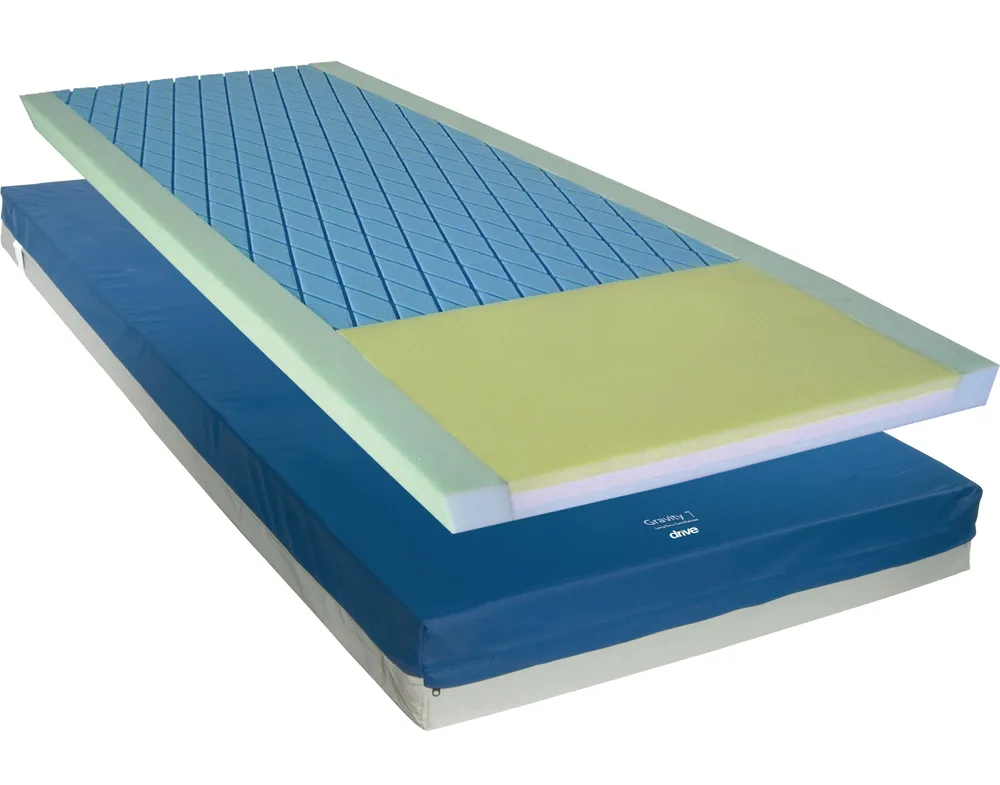
Warranty
- Non-prorated warranties provide the most cost-effective option for ensuring long-term, quality performance and value
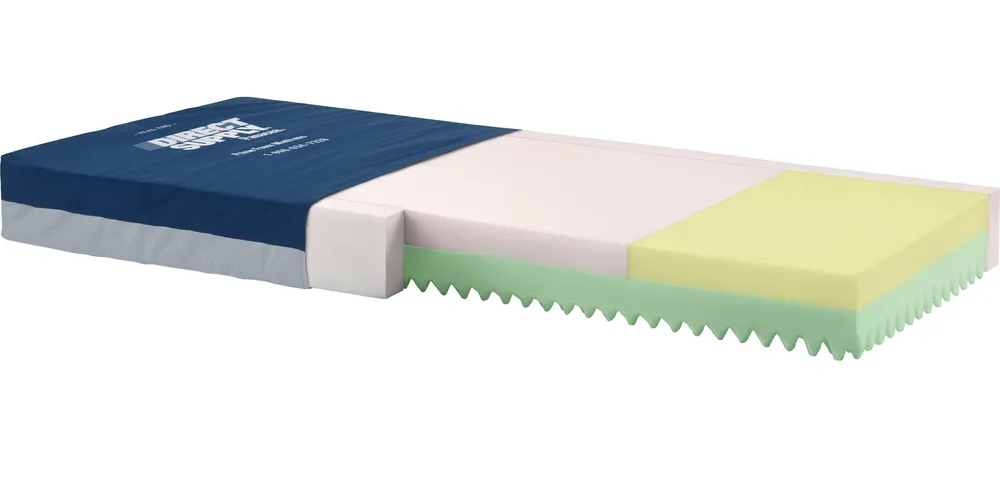
Perimeters
Mattress Without Firm Side Perimeter
- May compress under a resident’s weight and result in falls during ingress/egress or sleep
- May put residents at increased risk of entrapment
Mattress With Firm Side Perimeter
- Provide improved safe transfer support and remind resident they are near the mattress edge
- May help reduce the risk of entrapment
Raised Side Perimeters
- Provide extra protection against roll out falls
QUICK TIP For the most effective fall protection, look for one-piece raised perimeters rather than glued-on extensions.
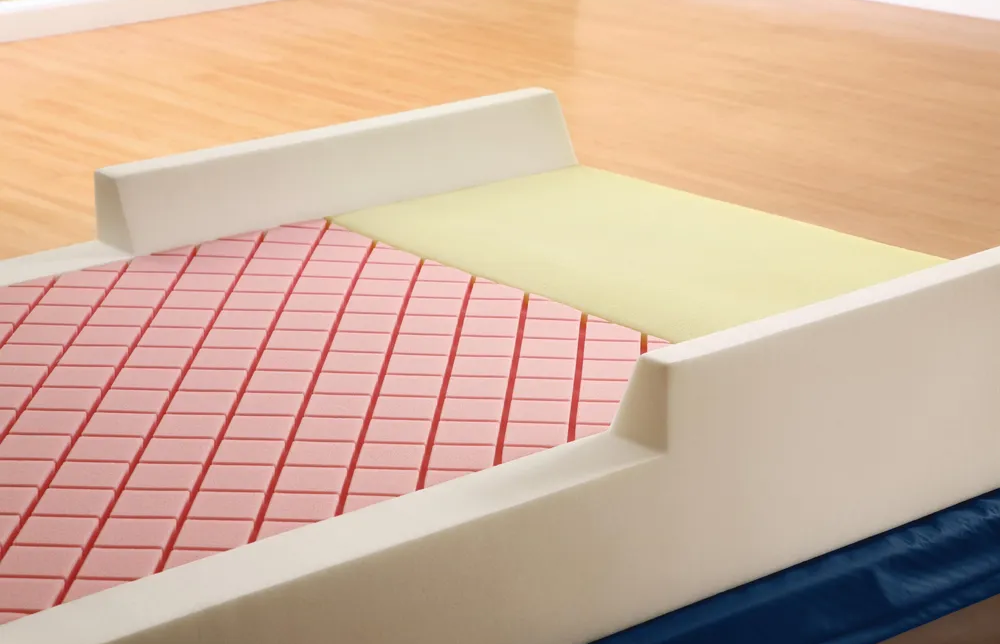
Heel Section of Medical Foam Mattresses
It’s important to consider the weight load on residents’ heels, as bony prominences are particularly vulnerable to pressure ulcers.
Standard Heel Surface
- Look for heel sections with super-soft or memory foam, which provide better pressure reduction for vulnerable heels than the standard foam in the rest of the mattress
Heel Slope
- A sloped heel section redirects pressure to residents’ calves, where there is more fatty tissue and muscle to absorb pressure
QUICK TIP Heel slopes may be an ideal feature for residents who require a higher level of pressure management.
Foam Mattress Covers
Most foam mattresses have a nonstretch, 2- or 4-way stretch cover.
Nonstretch
- Offers the most moisture resistance and may be a good option for incontinent residents
- A nonstretch foam mattress cover may help protect against shear, however may also create a warmer sleeping environment
2- or 4-Way Stretch
- May be slightly less moisture resistant than a nonstretch cover
- May feel cooler and more comfortable for the resident
- May allow better immersion and envelopment
Foam Mattresses FAQs
How do foam mattresses compare to traditional innerspring mattresses?
Foam mattresses generally offer better pressure relief and support compared to traditional innerspring mattresses. Innerspring mattresses may provide a firmer feel and better airflow but can lack the contouring and pressure-relieving properties of foam.
Are foam mattresses suitable for adjustable beds?
Yes, foam mattresses are highly compatible with adjustable beds. Their flexibility allows them to bend and adjust without compromising support and comfort.
Do foam mattresses require a special bed frame or foundation?
While foam mattresses can work with most medical bed frames, using a solid, slatted, or gird desk with minimal spacing between slats is recommended to prevent sagging and prolong the mattress’s lifespan.
How do you care for a foam mattress?
To care for a foam mattress:
- Inspect the mattress cover during every linen change for cuts, rips, tears, or cracks
- Mattress zippers should not be opened during cleaning for infection control
- Follow cleaning instructions from your mattress manual for approved cleaners
Direct Supply® makes finding the right foam mattresses easy
Direct Supply is your single source for foam mattresses and accessories for hospital and long term care settings.
With safety as a top priority, all Direct Supply foam mattresses are specifically designed to meet or exceed relevant safety standards and to provide the ultimate combination of comfort and support. Offering an extensive selection in one convenient place, Direct Supply makes it easy to find everything you need to create a comfortable and supportive sleeping environment for your patients.
Take a look and once you’ve made your pick, you’ll find easy ordering, convenient delivery and installation services, budget-friendly financing options, and a 100% satisfaction guarantee. Of course, if you need assistance you can count on our expertise to help you find exactly the right match for your specific requirements and budget.
